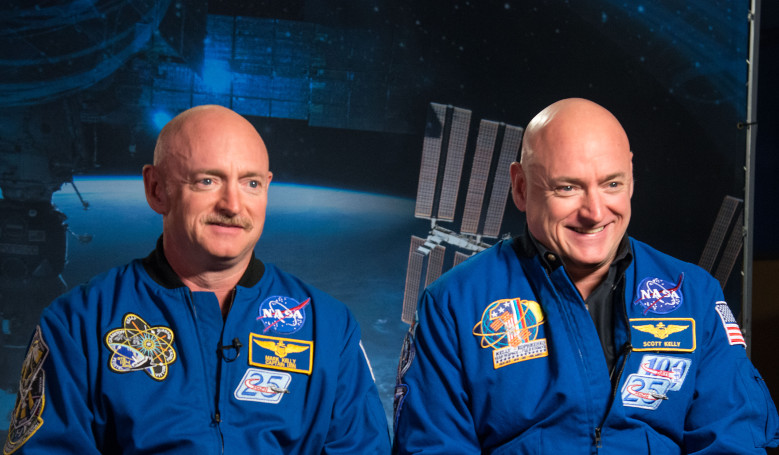Spending a significant amount of time in space, while no doubt enjoyable for the astronaut in question, also raises questions about the affects of space travel on the human body. So what does happen to your body when you spend a year floating above the earth?
In March 2015, American astronaut Scott Kelly headed to the International Space Station (ISS) to take part in a year-long study conducted by NASA to improve our knowledge on the medical, psychological and biomedical challenges faced by astronauts during long-duration spaceflight. What was different about this study was that Scott’s twin brother Mark would be used as a ground-based control subject to compare against any changes that Scott might undergo.
Known as the ground-breaking Twin study, this extended mission would give NASA an insight into what potential astronauts might face on a 30 month mission to Mars, if such a project is ever given the go-ahead.
Details of this comprehensive study were recently presented at the annual 2018 NASA Human Research Program Investigator’s Workshop (IWS), where 10 teams investigating different aspects ranging from cognition, immunological responses and biochemical profiles for example, presented their preliminary findings.
One of the studies focusing on genetic, epigenetic and transcriptional dynamics (how cells regulate physiological processes) of each twin, revealed that space travel causes an increase in methylation, the process of turning genes on and off.
“Some of the most exciting things that we’ve seen from looking at gene expression in space is that we really see an explosion, like fireworks taking off, as soon as the human body gets into space,” Twins Study Principal Investigator Chris Mason, Ph.D., of Weill Cornell Medicine, said. “With this study, we’ve seen thousands and thousands of genes change how they are turned on and turned off. This happens as soon as an astronaut gets into space, and some of the activity persists temporarily upon return to Earth.”
The study conducted by Mason and team into how space travel can influence chemical changes in RNA and DNA, showed that significant responses were found for at least six biological pathways in Scott during his time in space including; hypoxia, mitochondrial stress and increased levels of mitochondria in the blood, collagen, blood clotting, bone formation and hyperactive immune activity
The study further highlighted that although 93% of Scott’s genes returned to normal after landing, a subset of several hundred “space genes” were still disrupted after return to Earth.
Just as interesting was an investigation that focused on telomeres – a compound structure that protects or “caps” the ends of chromosomes against deterioration. These typically decrease in length as a person ages. However, Susan Bailey of Colorado State University and her team who studied Scott’s telomeres reported that his significantly increased in average length while he was in space. Nonetheless, once back on Earth measurements showed that within about 48 hours of landing Scott’s telomeres had shortened in length.
The reason behind the lengthening is unclear and will need further investigation, but it may be from his rigorous exercise regime and restricted caloric intake while on the space station.
It was also good news for Scott’s cognitive study as an extra six months in space resulted in no significant decreases in Scott’s cognitive performance relative to his twin brother, Mark. Once back home however, a more pronounced decrease in speed and accuracy was reported; a finding that could be due to re-exposure and adjustment to Earth’s gravity.
However, it was not so good news for the study into metabolomic and genomic markers of atherosclerosis (the hardening and thickening of the arteries). Research showed elevated inflammation biomarkers and a thickening of the carotid artery wall in Scott during and immediately after his mission, while no changes were observed in Mark.
Despite these changes it was found that most of the biological changes Scott experienced in space quickly returned to nearly his preflight status after returning to Earth and readapting to Earth’s gravity. Some changes returned to baseline within hours or days of landing, while a few persisted after six months.
The final results including updated post flight data for the Twins Study is expected to be published in 2018.











